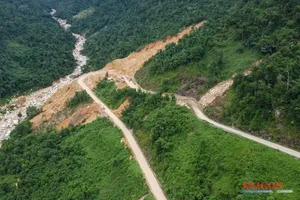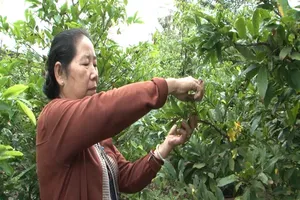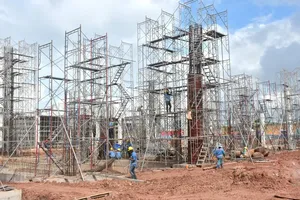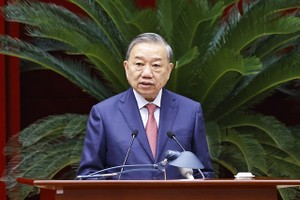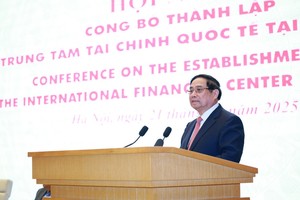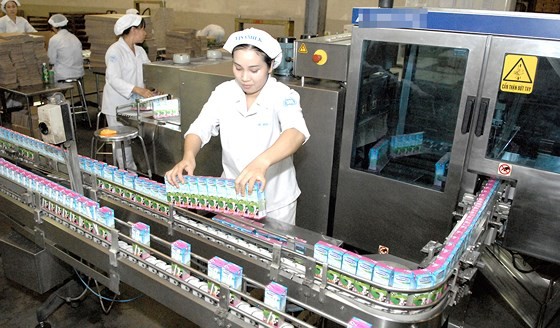
This is a sustainable direction which helps Vietnamese enterprises to quickly gain ground in major export markets.
Figures from the General Statistics Office of Vietnam showed that overseas investment capital of Vietnamese firms increased while foreign investment capital into the country slightly dropped in 2018. Particularly, by December 20 last year, FDI commitment for 3,046 newly-licensed projects reached nearly US$18 billion, up 17.6 percent in volume but down 15.5 percent in value over the same period in 2017. There was also a decline of about 9.7 percent in projects asked to add more capital compared to 2017.
However, capital contribution and stake acquisition by foreign investors into Vietnamese firms was more optimistic with total value of $9.89 billion, up 59.8 percent over the same period in 2017. Of which, there were 1,113 times of capital contribution which raised charter capital worth $4.25 billion and 5,383 times of stake acquisition without changing charter capital worth $5.64 billion.
Meanwhile, investment of Vietnamese investors to foreign countries also posted good growth in 2018. A total investment of $376.2 million was pumped into 149 newly-registered projects and $56 million into existing projects. In total, Vietnam’s overseas investment hit $432.2 million last year.
Laos lured the largest investment with $81.5 million, accounted for 18.9 percent of total investment. Australia followed with $55.5 million, accounted for 12.8 percent. The US was the third largest with $53 million, accounted for 12.3 percent. In addition, Vietnamese firms have invested in 35 other countries and territories.
Finance and banking was the most appealing sector, attracting $105.8 million, or 24.5 percent of total investment. Wholesale, retail sale and repairing of cars, motorbikes and other vehicles sector drew $82.9 million, or 19.2 percent. Agriculture, forestry and aquaculture sector grabbed $52.3 million, or 12.1 percent. Industrial manufacturing and processing sector garnered $52.1 million, or 12 percent.
The latest financial statement of Vietnam Dairy Products Joint Stock Company (Vinamilk) showed that the company’s total revenue in the fourth quarter of 2018 was roughly VND13.02 trillion and post-tax profit hit VND1.74 trillion, up 30.5 percent compared to the same period in 2017.
The company’s great business result was partly contributed by effective performance of its subsidiaries and its investment abroad. Earlier, Vinamilk bought and completely owned Driftwood factory in California after exporting its products to the US market for a long time.
Moreover, the company has also built several dairy plants in many countries, including Cambodia, New Zealand and Poland. Its products have been exported to 43 countries around the world, including the US, Japan, Australia, Thailand, Myanmar, Bangladesh and the Middle East.
Another way to approach strict markets that many firms have implemented is to upgrade technology and production line so as to meet standard barriers set by export markets.
Representative of NutiFood Nutrition Food Joint Stock Company said that right after the event that more than 700 Vietnamese businesses were suddenly cancelled export licenses into the US for not meeting regulations in the Food Safety Modernization Act, the company worked with the US Food and Drug Administration to understand the situation.
After that the company has invested in new production line which allows quality control from farm to factory to table. This investment required the company to reevaluate its capital capacity. However, the new investment has helped the company to surpass technical barriers, gain easier access to the market and maintain stable export turnover to the US and other choosy markets.
Along with businesses’ efforts, the Government should increase effectiveness of trade promotion in foreign markets. The current cost for promoting Vietnamese products is estimated at VND70 billion which is not enough to build and promote Vietnamese brands in global market.
This has reduced Vietnamese enterprises’ opportunities to access global market in both investing and exporting fields. Vietnamese firms also concerned about poor analyzing capacity of information agencies when analyzing investment demand and consumption trends of foreign markets; hence, they have to search for information by themselves if they want to invest in any country. Therefore, it is essential to have a solution to minimize risks for Vietnamese firms when exporting and investing in foreign markets.
In addition, amid the context that most countries put high technical barriers, Vietnamese enterprises should carefully consider reinvestment. It is best for them to make new investment instead of reform or add more capital to existing investment as it costs more money as well as increases risks when exporting as food safety and traceability, which is widely applied in the world, are not ensured.
It is clearly that local businesses have taken initiative in approaching and entering foreign markets. Mr Tran Viet Anh, vice chairman of Ho Chi Minh City Union of Businesses Association, said that although the achievement was not much, these are pioneers to help Vietnamese enterprises to enter choosy markets and help other firms to increase export opportunity.




